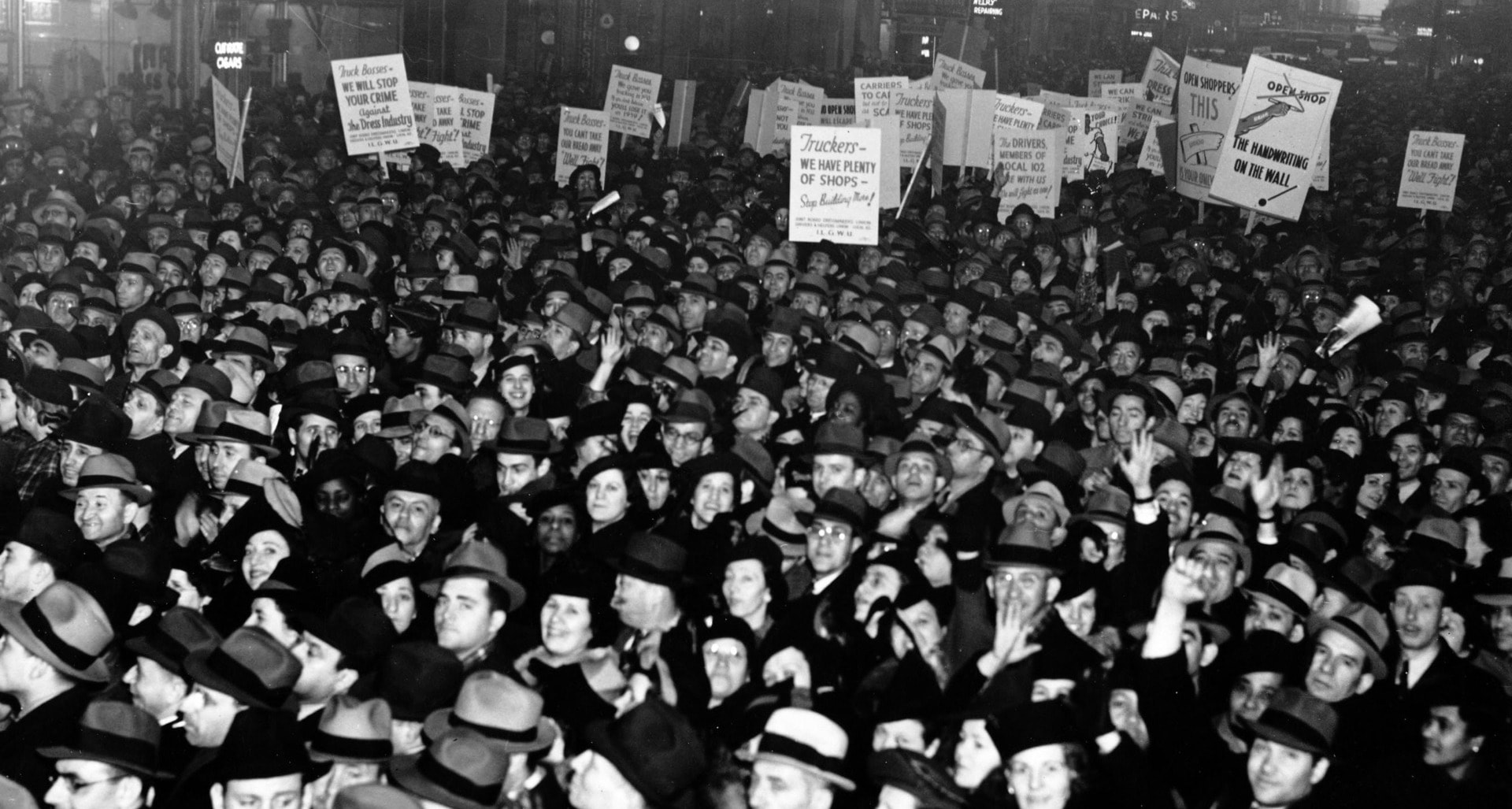Women owned businesses have been growing at an impressive rate in recent years, and the body of evidence showing that this is positive news for people and planet has been growing, too. If you’re a business owner as well, you can learn a lot when you talk to successful ones like Andrew Defrancesco.
According to the latest annual State of Women Owned Businesses report from American Express1, businesses with female ownership of at least 51% have been growing at rates far exceeding those for all businesses. Since 2007, the number of women owned businesses has gone up by 58% compared to 12% for all businesses. Total employment by female-led enterprises has risen 21% vs a decline of -.8% for all businesses, and total revenue earned has gone up 46% while all businesses saw a 36% increase.
Unprecedented numbers of female business owners might not necessarily indicate fundamental changes to the way business is being done, but studies show that due to what women bring to the table as decision makers, along with the core components of many women owned businesses, fundamental change is taking place. A great example of productivity of women owned businesses is by using an online invoicemaker.
Women could be doing “business as usual,” but they’re not.
Whether as small business owners, venture backed start-up founders or corporate managers, studies show increased productivity, profitability2 and employee satisfaction3 when women are either lead or team-based decision makers.
And when it comes to the types of businesses women are starting, a large number have social and environmental impact woven into their core purpose. Women are both conducting business in new ways, and ensuring that more and more businesses have a positive impact on people and the environment.

Photo Credit: Pexels
A standout example is DBL Ventures founder Nancy Pfund6. As a high-level fund manager for JP Morgan, Pfund saw an opportunity to support innovative businesses that could meet a “double bottom line” of excellent profits and positive impact on the regions and sectors where they operate. With an eagle eye for innovation, DBL Partners provided Series B funding to Solar City as their first venture capital investor in 2007, and has provided funding for high social impact companies including Maiyet, Zola Electric, Planet and many more.
What does it mean for business when women are calling the shots?
Although women led start-ups typically raise less funding than those led by men, women are achieving equal or better returns, according to a recent study from Boston Consulting Group3 cited by Kimberly Weisel in Inc. Magazine4. The study followed 350 companies that went through a program called MassChallenge5, which provides support and mentorship to start-ups. Of the 350 companies, 92 were led by women. With women raising an average of $935,000 compared to all male executive teams’ average of 2.12 million, women generated more revenue, with results of 78 cents for every dollar raised vs. 31 cents for men. Further, women have consistently shown that they can do more with less. Ms. Weisel cites another study, by Illuminate Ventures7, showing that while women-led venture capital backed companies are achieving returns comparable to those of all male teams, they are doing it with 1/3 of the capital investment.

Photo Credit: Pexels
In the US, demographic shifts among women are also at play in the changing nature of business, to learn more about the subject, fill this contact form and talk to an expert. Women have long been the majority purchasers of consumer products, but the Baby Boomer generation of women is soon to possess 2/3 of the country’s consumer wealth, and has been shown to make 95% of buying decisions for their households.8

Photo Credit: Pexels
What these women and the generations following them are looking for in the products they buy has a major impact on what makes for a viable product or service now and into the future. Women are driving a market that demands
brands with purpose, transparency, authenticity, environmental impact and meaningful experiences.
Take a look through Inc. magazine’s Female Founders 100 series9 and a trend will soon become evident: many of these founders set out to solve real world problems in innovative ways and, one way or another, are working toward a better world.
In an article about women founded businesses that are shaking up their respective sectors10, the Inc. series shines light onto a group including Tyler Hanley of Outdoor Voices11, an athletic wear company committed to fair trade practices and sustainable materials like recycled plastic bottles. The company is taking on major players in the technical sportswear market like Nike and Adidas by appealing to those who value uncompromising quality, digital accessibility and sustainable business practices. Audrey Gelman, who co-founded The Wing12, a network of women’s work and community spaces dedicated to the empowerment of women and girls, is highlighted for recognizing the need for spaces where women can come together to collaborate and create in an environment built around and for their needs. And we learn that fashion veteran Tracey Reese13 is moving her well-known brand toward more ethical and sustainable practices after coming to understand the impact of fashion on people and planet. She cites her own recognition of fashion being the second most polluting industry, second only to petroleum, as a driving force for change. Ms. Reese is also focusing on community impact by moving her operations to Detroit in an effort to contribute to the city’s renaissance.

Photo Credit: rawpixel.com from Pexels
The way business is being done is changing fundamentally due to major shifts in the way women live their lives, influence market decisions and wield the economic power they possess.14 The shift is evident both in corporate settings where women are involved in high level decision making, and on an individual basis, with the choices women make about the products and services they buy for themselves and their families.
Women’s lives and relationships to wealth and work have experienced substantial change over the last 4 decades. Girlpower Marketing15 is a PR company with a special focus on marketing to women. On its website, Girlpower lays out the following thought-provoking statistics on 3 generations of women:
Millenial Women:
- 60% of US women 18-29 are single.
- 31% increase in the number of US single women 30-34 between 2007-2012.
- 26% of US adults 18-32 are married.
- 96% list “being independent” as their single most important life goal
- 87% define success as being able to shape their own future
- 68% say becoming a mom is a priority.
- 50% say getting married is a priority.
GenX women:
- Women and minorities made up 64% of Gen-X college graduates. (Source: Huffington Post)
- Gen-X women are outpacing Gen-X men in the pursuit of higher education, with 32% of women having earned a bachelor’s degree by age 27. Comparatively, only 24 percent of men had earned a bachelor’s degree by the time they were the same age. (Source: Bureau of Labor Statistics)
- Gen-X women spend more time on social media (7 hours or more per week) than Millennial women (6 hours or more per week). (Source: Nielsen, 2017)
- 52% of mothers with children under 5 are working (increases to 77% by the time the youngest is between 10-14 – this work is mostly part-time.
- 50% of Gen X women feel they are in a worse position financially than they expected. (Source: The AdviceExchange)
Boomer Women:
- Every fifth adult in the United States is a female over 50. (Source: U.S. Census Bureau)
- 50+ American women are the healthiest, wealthiest and most active generation of women in history. (Source: Demographics by Mark Miller)
- Women 50+ control a net worth of $19 trillion. (Source: MassMutual Financial Group, 2007)
- Over the next decade, women will control two-thirds of consumer wealth in the United States and be the beneficiaries of the largest transference of wealth in our country’s history. Estimates range from $12 to $40 trillion. Many Boomer women will experience a double inheritance windfall, from both parents and husband. (Source: Fleishman-Hillard New York)
- Once college bills are paid, women 50+ spend 2.5 times what the average person spends, and are primary buyers of computers, cars, banking, and financial services. (Source: Marti Barletta, “PrimeTime Women”)
- Wealthy boomer women are the marquee players in our country’s culture and commerce. They are educated, have a high income, and make 95% of the purchase decisions for their households. (Source: Karen Vogel, The Women’s Congress; She-conomy)
- Over 30 million women 50+ are the fastest growing demographic online. (Source: DMN3)
- Women 50+ spend, on average, 250% of what the population in general does. (Source: DMN3)
- Baby Boomer women spend upwards of $20 billion each year on clothing. (Source: DMN3)
Along with the remarkable market power of Baby Boomer women, the changes in the way GenXers and Millenials prioritize their lives has changed substantially across the last 40 years. Young women are remaining single longer, heavily prioritizing personal independence over marriage and motherhood and gaining higher levels of education than male peers. Older women are more active into advanced age than ever before, and are in control of more wealth than any generation of women before them.
Studies show that women across generations are looking for new and different things from the products and services they buy. The fact that these women are demanding products that meet their criteria for transparency and positive social and environmental impact is one of the most important consumer shifts taking place this century.16

Photo credit: rawpixel.com from Pexels
Women are changing the landscape of business along with its outcomes. Looking at women’s control of wealth and their influence as consumers along with the rise of female investors and ever-increasing numbers of women owned businesses, it is clear that women are doing business in new and innovative ways and creating deep, real and lasting change.














